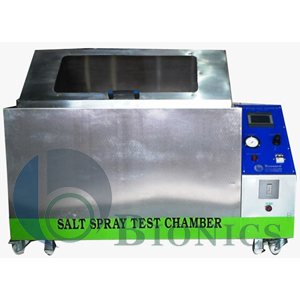Preserving Integrity: Navigating Corrosion Challenges with Salt Spray Test Chambers
Corrosion poses a formidable threat to the longevity and performance of materials, especially in industries where exposure to harsh environmental conditions is inevitable. In the pursuit of ensuring durability and quality, the Salt Spray Corrosion Test Chamber emerges as a critical tool in the arsenal of material testing and quality control.
1. Unmasking the Corrosion Culprit
Corrosion, often fueled by salt-laden environments, can compromise the structural integrity of metals and coatings. The Salt Spray Corrosion Test Chamber replicates these corrosive conditions, subjecting materials to a saline mist to assess their resistance and performance under extreme circumstances.
2. Simulating Real-World Challenges
Industries ranging from automotive to aerospace leverage Salt Spray Test Chambers to simulate the corrosive effects of natural elements like saltwater spray, providing insights into how materials will withstand these challenges over time. This controlled testing environment allows for precise evaluations and adjustments in material formulations.
Applications Across Industries
1. Automotive Excellence
In the automotive industry, Salt Spray Corrosion Testing is instrumental in evaluating the durability of coatings on vehicle components, ensuring they withstand exposure to road salts, rain, and other corrosive elements. This ensures the longevity and reliability of automotive parts.
2. Aerospace Endurance
For aerospace materials, the corrosive effects of high-altitude exposure, humidity, and salt spray can be simulated in the Salt Spray Test Chamber. This aids in developing materials and coatings that meet the stringent standards required for aircraft components.
3. Maritime Resilience
In the maritime industry, where structures are constantly exposed to saltwater, the Salt Spray Corrosion Test Chamber assists in developing corrosion-resistant materials for ship components, ensuring maritime safety and longevity.
Key Advantages of Salt Spray Corrosion Testing
1. Predictive Insights
The test chamber provides invaluable predictive insights into the performance of materials, allowing manufacturers to anticipate potential corrosion issues and implement preventive measures.
2. Quality Assurance
By subjecting materials to accelerated corrosion conditions, the Salt Spray Test Chamber aids in quality assurance, ensuring that products meet industry standards and customer expectations for durability.
3. Research and Development
Researchers and material scientists leverage the Salt Spray Corrosion Test Chamber to fine-tune formulations, discover new materials, and continuously improve the corrosion resistance of products.
Conclusion: Defending Against Corrosive Forces
In the battle against corrosion, the Salt Spray Corrosion Test Chamber stands as a formidable ally, providing a controlled environment to assess and enhance the resilience of materials. As industries continue to evolve, the insights gained from this testing methodology contribute to the development of robust, corrosion-resistant materials that withstand the challenges of the real world. Embrace the future of material durability with the precision and reliability offered by Salt Spray Corrosion Testing.

Gratitude for enlightening us with this insightful post! Your knowledge is truly appreciated. We are one of the leading ecommerce website development in delhi
ReplyDelete